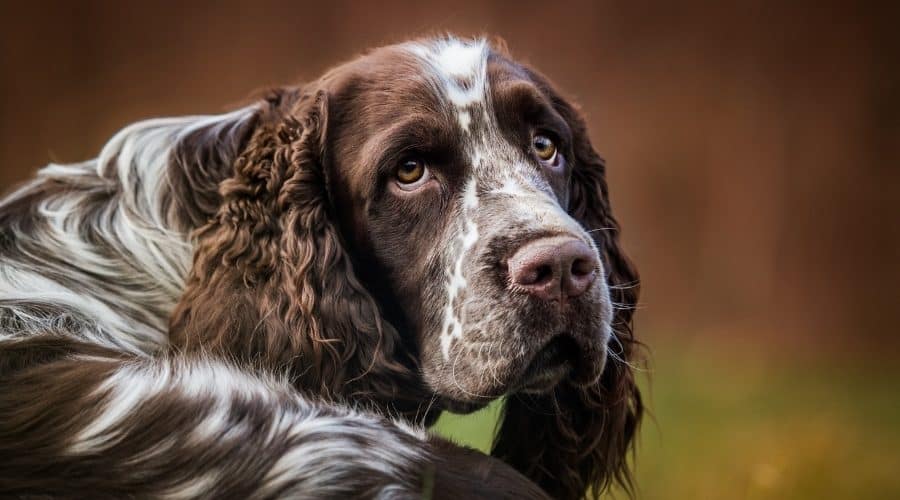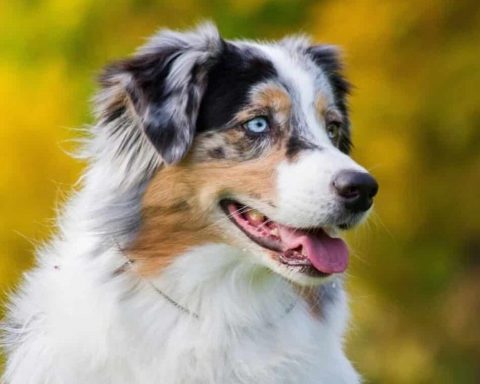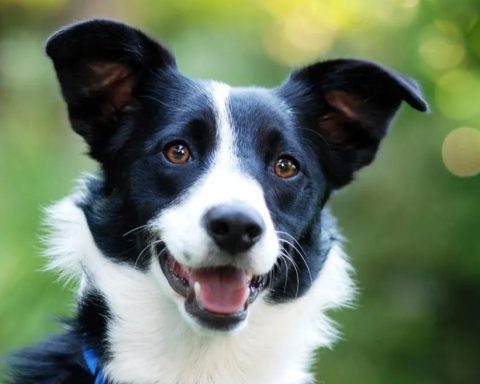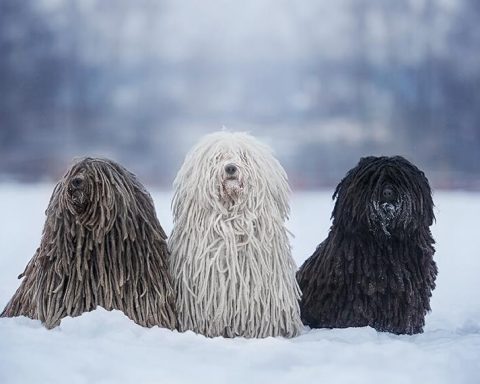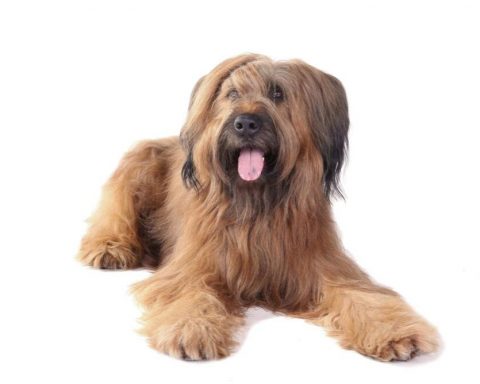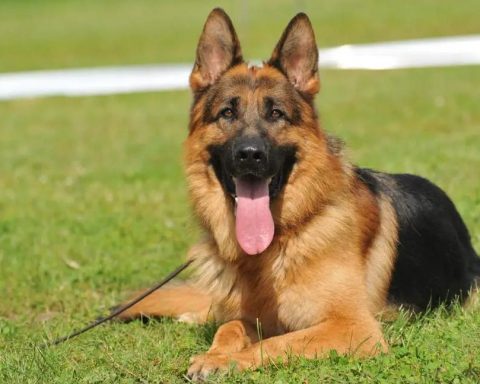The English Springer Spaniel is a medium-sized sporting dog with a compact frame and a broken tail. The coat is of moderate length with feathered trim on the legs, ears, chest and belly. His drooping ears, gentle, civilized expression, firm structure, and friendly wagging tail announce that he is undoubtedly a member of the old family of the Strikehound.
Above all, he must be a very well-proportioned dog, without any exaggeration, all parts appearing fine and harmonious. His posture is one of proud standing, with a deep body, and strong, muscular legs, of sufficient length to support the body with ease.
Taken as a whole, the English Springer Spaniel appears to have strength, stamina and is very agile. He appears to be the type of dog that can do hunting work under tough conditions and hold his own. The best English Springer Spaniels are sleek, well-proportioned, smooth and enthusiastic, and are thoroughbred sporting dogs with a distinctly snipe-hunting character that combines beauty and utility.
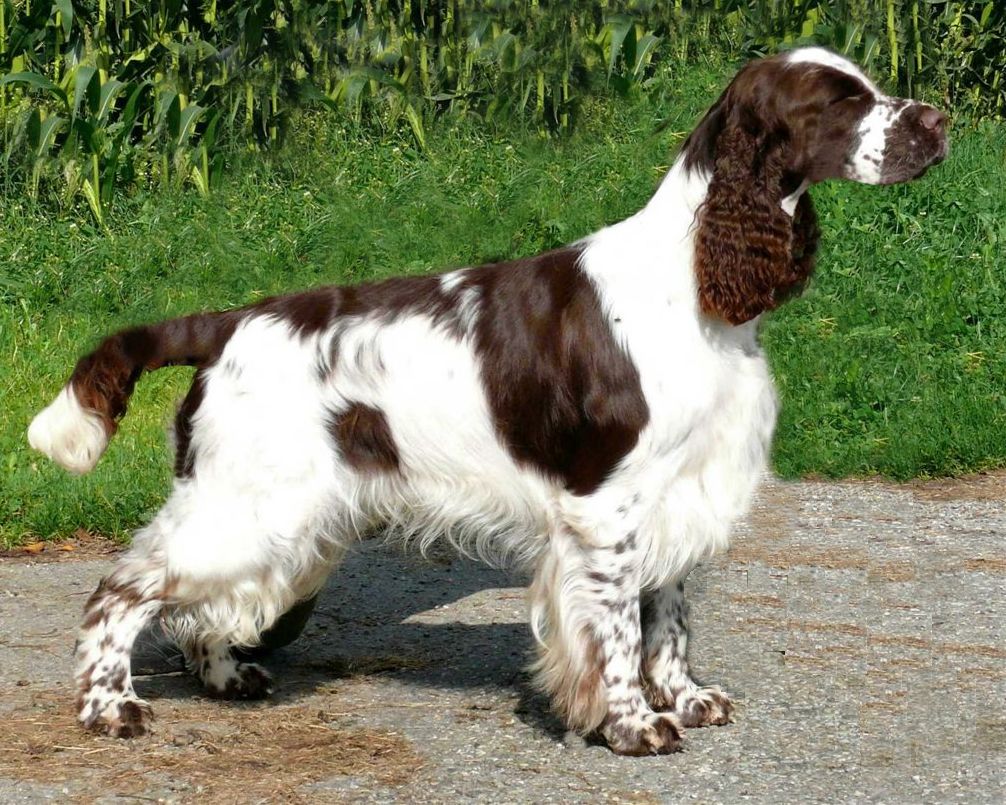
Body Type
The structure of the English Springer Spaniel allows him to cover messy and rough ground with agility and reasonable speed. His structure allows him to produce great endurance.
He should maintain a medium build. The ideal shoulder height for males is 20 inches; for females, 19 inches. An error of more than 1 inch is considered a defect.
A male with a shoulder height of 20 inches, when well constructed and in good condition in every respect, weighs about 50 pounds; a female with a shoulder height of 19 inches weighs about 40 pounds.
The length of the body (the distance from the junction of the scapula with the upper arm to the hip) is slightly greater than the height of the shoulder.
A dog whose body is too long, especially at the withers, is easily fatigued and lacks the compactness of outline which is characteristic of the breed; a dog whose body is too short in relation to the length of the legs destroys the general balance and interferes with the gait. Both are as undesirable as each other, and both are defective.
The English Springer Spaniel should have the correct physique, appearing solid and strong, with plenty of bone, but never appearing thick or clumsy.
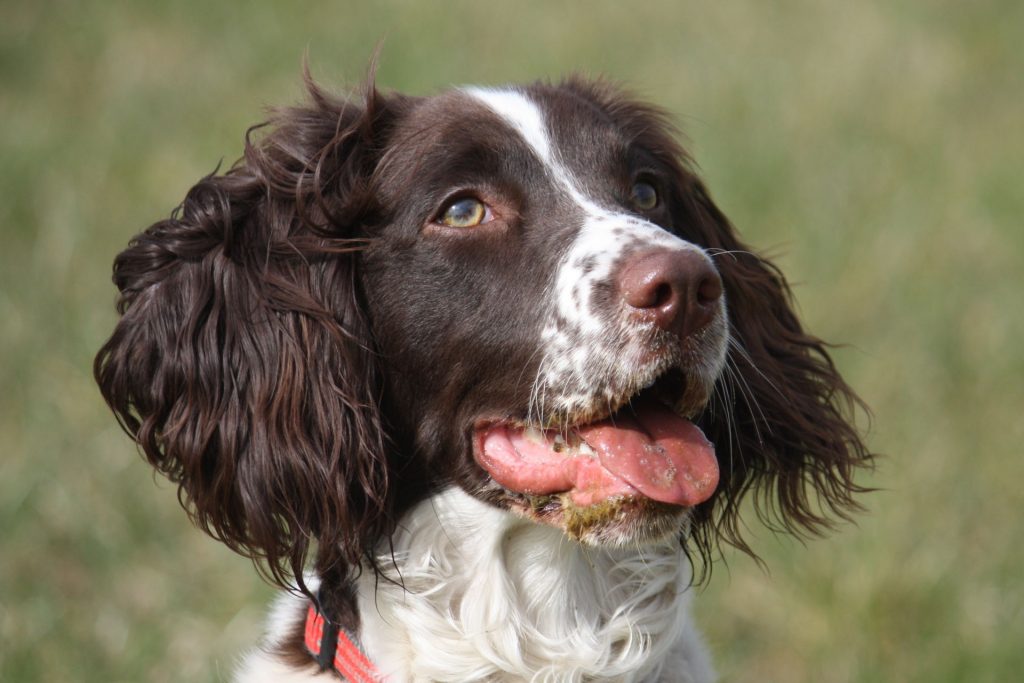
HEAD
The head of the English Springer Spaniel gives the impression of not being very heavy. It is very beautiful, combining strength and refinement. The most important thing is that its size and proportions are in balance with the rest of the body. In profile, the length of the head is roughly equal to the length of the neck to where it blends into the body.
The stop, the brow and the bone structure around the eye sockets show the beautiful and distinctive expression of the Huntress, alert, kind and trusting.
The eyes, in relation to the rest of the body, are the basis of the Hound’s attractiveness. The correct size, shape, position, and color affect his expression and attractiveness. The eyes are medium-sized, ovoid, relatively well-parted, and deep in the sockets. Eye color is in harmony with the coat color; liver and white dogs have dark hazel eyes; black and white dogs have black or brown eyes. Eye rims well pigmented to match coat color.
Eyelids are tight, with no or very little of the transient membrane showing. Small, round, protruding eyes, and a yellowish or brassy color are considered serious defects. Ears are long and fairly wide, hanging against the cheeks with no sign of erection or outward direction. The ears are thin and extend in length roughly to the tip of the nose. The correct position of the ears should be at the same level as the eyes and not situated too far back on the head.
The head is of moderate length, fairly broad and flat at the top, and slightly domed at the sides and back. The posterior occipital bone is not pronounced. The head rises from the front face, beginning at the stop and separated by a notch or shallow groove, which is located between the eyes. The notch disappears when it extends to the middle of the forehead.
In general, the stop is moderate. It (the stop) should not be very prominent in the face; it is more like a fine rise where the muzzle joins the head. But it is emphasized by the position and shape of the notch, the eyebrows, which are very well developed. The length of the muzzle is approximately equal to that of the head, and the width is only half that of the head.
Observed in profile, the muzzle and the contour lines of the head are roughly parallel to each other. The bridge of the nose is straight, up to the tip of the nose, and shows no sign of bending downward; the latter would result in the appearance of a disk face, which is a defect.
The bridge of the nose is neither bent downward, forming a “plate” face, nor protruding upward, forming a Roman nose. The cheeks are flat and the face appears well defined below the eyes. The jaws are of sufficient length to allow him to retrieve his prey with ease. Quite close to a quadrilateral, sloping and firm.
The upper lip hangs down in a quadrilateral shape, covering the jaw line, and in any case the lips must not droop excessively. The nose-glasses are well pigmented, liver or black in color, matching the color of the coat.
The nostrils are open and wide. Teeth are strong, neat, and of proper size, with a clipper bite being most desirable. A pincer bite and or 1 or 2 incisors slightly out of alignment are secondary defects.
A protruding upper jaw bite and sum, a protruding lower jaw bite and sum, or a crooked jaw are serious defects and require severe punishment.
Neck, Dorsal Line, Body
The neck is of moderate length, well muscled, neat, and slightly domed at the tip. Gradually and smoothly blends into the sloping shoulder blade. This part of the dorsal line is firm and very slightly sloping from the rump of the horse’s shoulder to the root of the tail. The body joint is short, firm and compact. The chest is deep, extending to the elbows, and the forechest is very well developed; however, it should never be so broad or rounded as to interfere with the action of the forelegs. The ribs are rather long, gradually rising towards the middle of the body, and tapering towards the end.
The lower abdominal curve is horizontal, and lifts slightly from the elbow to the lumbar fossa. The back is straight, firm, and essentially horizontal; the loins are short, firm, and slightly rounded. The rump is delicately rounded and blends smoothly into the hind legs. The rump gradually slopes toward the root of the tail, and the tail is positioned as a natural extension of the curve of the rump. The tail position is kept horizontal, or slightly higher, showing his characteristic lively, jaunty movements, which are more pronounced at play.
A pinned-up tail (appearing timid or unreliable) is a defect, as is, conversely, a tail that is at a 90-degree angle to the dorsal line, as in terriers.
Forequarters
A correctly constructed forequarters in the English Springer Spaniel produces efficient movement. The shoulder blades are flat and very close together at the top, blending smoothly into the curve of the body.
Ideally, the scapula is approximately the same length as the upper arm bone from the withers to the joint where the scapula meets the upper arm bone, and the upper arm bone is at an angle of approximately 90 degrees to the scapula; this puts the forearm in the correct position underneath the body and the elbow just below the top of the scapula.
The elbow is close to the torso. The forearms are straight, and the bones are about the same size up to the end of the paw. The bones are strong and slightly flat, not too rounded or heavy. The stifle is short, strong, and slightly angled without appearing weak. Wolf claws usually need to be removed. Foot claws round or slightly ovate. Compact and rounded arches, of moderate size, with thick pads and feathery ornamental hairs between the toes.
Hindquarters
The English Springer Spaniel requires firm, muscular, and very strong hips and thighs both in work and in competition. His entire hindquarters show strength and drive. Thighs are wide and muscular.
The knees are strong. Considering function and efficiency, the hindquarters should never be more angular than the forequarters, much less lacking in any way. The fly joints are slightly rounded and must not be too small or too sharply defined. The hind quill is short (about 1/3 the distance from the hip to the paw), sturdy and strongly boned. When viewed from behind, the hind legs are parallel to each other.
Wolf claws usually need to be removed. The paws are the same as the forequarters, except slightly smaller and more compact.
Coat
The English Springer Spaniel has an outer coat and an undercoat. On the body, the coat is medium-length, flat or slightly wavy, and easily distinguished from the undercoat, which is short, soft, and dense. The amount of undercoat is influenced by season and climate.
The combined protection of the undercoat and cloak allows him to be waterproof, withstand harsh weather, and be protected from thorns. The ears, chest, legs, and belly of the English Springer Spaniel are covered with a number of feathery trimmed coats, which are moderately long and very thick.
On the head, the front of the forelimbs, under the fly-joints and on the front of the hind limbs, the coat is short and fine. The coat is neat, shiny and “active” in appearance, indicating good health.
The head, ears, neck and paws should be reasonably trimmed to remove dead hairs (undercoat) and to thin and shorten excess trimmings for a better appearance.
The tail may be trimmed or the wavy trimmed hairs may be retained at the edges. In general, the appearance should look natural, and over-trimming, especially of the coat on the body, with broken hairs, undulating hairs, or false-looking shapes is a defect; likewise, too much trimming, which detracts from the neat curves of the sporting dog’s silhouette, is also a defect. The correct quality and style of coat is more important than mere quantity of coat.
Color
The following color combinations and markings are all acceptable and of equal status.
(1) Black or liver with white markings or predominantly white with black or liver markings.
(2) Orchid or liver colored ombre.
(3) Tricolor: Black and white or liver and white with brown markings, brown markings usually on eyebrows, cheeks, inside ears and under tail. White coat with possible stains. No odd colors such as lemon, red or orange.
Gait
The final test of the structure and solidity of the English Springer Spaniel is to look at the movement. A prerequisite for good movement is a very well-proportioned structure. The forequarters and hindquarters have the same degree of angulation and muscularity, allowing for a smooth and easy gait. The shoulder blades are angled back to allow a larger stride, just as the hindquarters provide a powerful drive. When viewed from the side, the English Springer Spaniel displays a long stride with a solid back posture, without leaning, arching, or swaying from side to side. Observed from the front, the forelegs swing forward appearing relaxed and stretched. The movement from the shoulder blades to the elbows appears stretched, and the front legs show no signs of crossing or interfering. As speed increases, the limbs naturally converge and close toward the centerline of the body.
Faulty gaits include: lifting the legs too high; excess movement; short, undulating strides; sloping walks; paws spread too far apart, with the hindquarters showing rolling and swaying of the body.
Temperament
The typical English Springer Spaniel is friendly, eager to please its owner, a quick learner, and willing to obey. Such characteristics aid in management and can be easily controlled in the field by the proper dog trainer. In competition, appears calm and attentive, allows the judge to inspect him, and is neither angry nor fawning. Desire for aggression toward humans, or toward other dogs, is not characteristic of a sporting dog and is a defect. Excessive timidity, tolerable with puppies and novices, requires fair punishment.
Summarizing
In evaluating the English Springer Spaniel, the first thing to consider is the overall impression. Whether it looks typical or not, which consists mainly of the overall appearance and outline; and solidity, which encompasses movement and temperament. For, if he has a smooth, easy gait, he must have a healthy and well-proportioned structure, and is worthy of great attention, but if he does not look at all like an English Springer Spaniel, it cannot be condoned. A dog whose legs are too long or too short, and whose head or expression is entirely wrong, may move well, but will never be preferable to one who is good in every other respect, with some minor defects in gait. It must be remembered that the English Springer Spaniel is first and foremost (and first and foremost) a member of the Snipe family, a sporting dog, and appearance, demeanor and gait must conform to this standard.
Standard Adoption Date: February 12, 1994
Standard Implementation Date: March 31, 1994
